How do you rejuvenate soil in a raised bed?
Maria (S. FL. zone 10a)
8 years ago
Featured Answer
Sort by:Oldest
Comments (50)
Sheila z8a Rogue Valley OR
8 years agoMaria (S. FL. zone 10a)
8 years agoRelated Discussions
Clay soil in a raised bed--how to fix the problem
Comments (23)8 feet by 40 feet? You can place wide boards across the width which would divide it into several smaller blocks that can be worked from 3 sides. Place them so that the divisions allow you to reach the middle of the section from all 3 sides The boards will disperse your weight so that walking on them will not cause as much compression. Clay isn't a bad thing actually. It holds water and nutrients quite well, but just needs a little help. This could potentially be a really great garden. If you can incorporate a lot of peat moss or coconut coir, it will improve the tilth of the soil immediately and permanently. After that, all you would need to do is keep it well mulched and you'd have some great soil that would need a lot less supplemental water. If I were in this situation I would set up some additional beds (if there's room) to take up the excess 'topsoil' so you can add plenty of peat moss. It will be hard to mix peat moss all the way down to the bottom in that main bed so I would mix in as much as I could in the top section, install some WORM TOWERS then add some composting worms as well as some nightcrawler type worms that will burrow deeply and help build up the lower levels and improve the drainage. Keep the worm tubes fed with organic matter. (Worm tube instructions at link below) I would then plant a mix of deep-rooting cover crops (comfrey, alfalfa, clover, or whatever would work for this season and start growing now in your climate) which will root deeply and add organic material to those lower levels. Cut them down just before they begin to flower, and leave it all there on top as mulch. If necessary, spread it out a bit to let it dry some first, and chop it up a bit if you feel so inclined. Keep the bed mulched at all times. By next spring I think you'd have a great, very fertile bed ready for planting. Just open up holes in the thick mulch and put your seeds or plants in the soil. Leave the openings in the mulch to let the plants grow. Along the back, plan to plant things that you can train up the fence (melons, cukes, beans, tomatoes, etc. If parts of the plant are allowed to grow out the other side, you can harvest from there. Large fruits will need support as they grow which can be done by making little hammocks from pantyhose tied to the fence. Please keep us posted on how things go! Here is a link that might be useful: Build a Worm Tower...See MoreHow much soil will I need to fill a raised bed
Comments (4)Several (many?) years back, I did a same bed experiment with a newspaper bottom over undisturbed soil on one end and double dug on the other end and about 6" of mostly compost over the whole bed. I saw no difference in production from one side to the other after the newspaper had decomposed enough for roots to punch through mid-season and fewer weeds on the end that was *not* double-dug. I have not double-dug a bed again since then and have no qualms advising everyone else to skip that time and labor intensive task in a raised bed setting, especially if they are preparing a bed off-season that will not be planted in for a few months.. My compromise to the expense when initially filling a bed for immediate use is to use mostly bulk mushroom compost augmented from my household pile for some variety. I line the bottom of the bed with newspaper or cardboard, then a thick layer of old leaves and/or leaf mold (which has properties similar to peat moss when it breaks down), topped with the (hot) mushroom compost and then right around initial plantings I use a purchased potting mix (I prefer Scott's moisture control) to shield them some from the active composting going on around them. The only vermiculite that gets in comes from old pot-plants and from rooting cuttings as the used medium gets dumped into the compost pile. The worms eventually mix up sand from beneath the beds for more consistent percolation properties. Over a heavy clay soil I might be more partial to using vermiculite, but over sand I don't need it and couldn't see much benefit over rock either....See MoreHow much cubic feet of soil do you need to fill this 4x4 bed?
Comments (9)Depends on what type of soil you use to fill the raised bed as to how "fluffy" it might be and how much it might compact. A mix of garden soil and compost might be the fluffiest and it will settle some but to expect to lose 25% of the volume to settling is excessive. And if you use a bagged planting mix, it will settle even less, as those tend to be more compacted/condensed in the bag to begin with. Volume is volume and if the basic math calculation to fill the bed is 12 cubic feet and you use 6 - 2cf bags to fill, you have your 12 cubic feet. If the soil is more fluffy, it will just appear to be more than you need, then settle to the expected amount. Not sure where any calculus enters the equation.............See MoreTerrible Raised Bed Soil- what to do?!
Comments (10)The picture with the hand shows quite pale looking = low in organic content "dirt" with some coarse undecomposed organic debris mixed in - what did they excavate and screen to get the "screened topsoil", a beach? I’m also dropping off a soil sample for testing next week for further info This is what you want to have done, you are right on track there - DEFINITELY wait for the soil test report and recommendations before taking any additional action. Otherwise your fertilization program should have been producing an improvement - the marigold for instance I would be willing to bet is starved for nitrogen - so that may need to be tweaked. The report should indicate any changes in the soil minerals situation that need to be made. As here: Last fall we collected soil samples from a local organic demonstration garden and sent them out for nutrient analysis; this garden had recently experienced some soil and plant health problems. Every single one of the sites that was tested came back with nutrient readings off the scale. In large capital letters the report warned “DO NOT FERTILIZE THIS SOIL.” The excessive addition of nutrient-rich compost to this landscape contributed not only to plant health problems but to nutrient loading of adjacent natural waters. https://s3.wp.wsu.edu/uploads/sites/403/2015/03/soil-amendments-3.pdf...See MoreSheila z8a Rogue Valley OR
8 years agoMaria (S. FL. zone 10a)
8 years agoSheila z8a Rogue Valley OR
8 years agoRosefolly
8 years agoAquaEyes 7a NJ
8 years agoAquaEyes 7a NJ
8 years agonanadollZ7 SWIdaho
8 years agoUser
8 years agoBuford_NE_GA_7A
8 years agonikthegreek
8 years agocatspa_NoCA_Z9_Sunset14
8 years agolast modified: 8 years agoAquaEyes 7a NJ
8 years agolast modified: 8 years agonikthegreek
8 years agolast modified: 8 years agocatspa_NoCA_Z9_Sunset14
8 years agolast modified: 8 years agoAquaEyes 7a NJ
8 years agolast modified: 8 years agoMaria (S. FL. zone 10a)
8 years agocatspa_NoCA_Z9_Sunset14
8 years agolast modified: 8 years agoroseguy
8 years agoAquaEyes 7a NJ
8 years agoSheila z8a Rogue Valley OR
8 years agoboncrow66
8 years agoRosefolly
8 years agoAquaEyes 7a NJ
8 years agoAquaEyes 7a NJ
8 years agolast modified: 8 years agoMaria (S. FL. zone 10a)
8 years agoseil zone 6b MI
8 years agosubk3
8 years agoRosefolly
8 years agoMaria (S. FL. zone 10a)
8 years agonikthegreek
8 years agoMaria (S. FL. zone 10a)
8 years agolast modified: 8 years agoboncrow66
8 years agoMaria (S. FL. zone 10a)
8 years agoashrosetx
8 years agoMaria (S. FL. zone 10a)
8 years agoboncrow66
8 years agonikthegreek
8 years agolast modified: 8 years agoAquaEyes 7a NJ
8 years agolast modified: 8 years agoMaria (S. FL. zone 10a)
8 years agolast modified: 8 years agofduk_gw UK zone 3 (US zone 8)
8 years agoAquaEyes 7a NJ
8 years agolast modified: 8 years agoSheila z8a Rogue Valley OR
8 years agoMaria (S. FL. zone 10a)
8 years agoAquaEyes 7a NJ
8 years agolast modified: 8 years agoAquaEyes 7a NJ
8 years agoMaria (S. FL. zone 10a)
8 years agoAquaEyes 7a NJ
8 years agolast modified: 8 years ago
Related Stories

FEEL-GOOD HOMERejuvenate Your Home With Deep-Rooted Traditions
Give the subtle energies and spiritual side of your home some attention, and watch newfound calm and beauty blossom
Full Story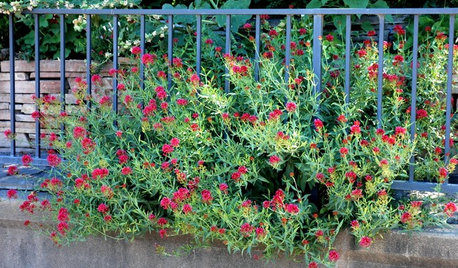
GARDENING GUIDESGrow a Beautiful Garden in Alkaline Soil
Got alkaline soil? Learn how to manage it and the many beautiful plants that will thrive in this ‘sweet’ soil
Full Story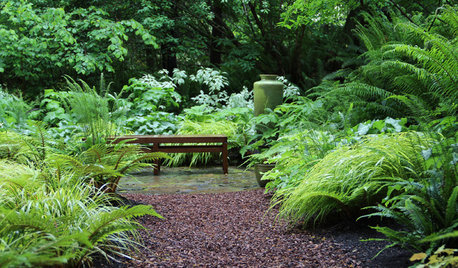
GARDENING GUIDES10 Solutions for Soggy Soil
If a too-wet garden is raining on your parade, try these water-loving plants and other ideas for handling all of that H2O
Full Story
GARDENING GUIDESGardening Solutions for Heavy Clay Soils
What’s a gardener to do with soil that’s easily compacted and has poor drainage? Find out here
Full Story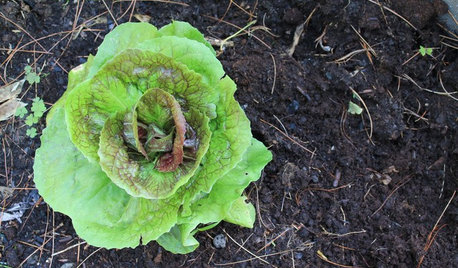
FARM YOUR YARDHow to Get Good Soil for Your Edible Garden
The nutrients in your soil feed the plants that feed you. Here are tips on getting it right — just in time for planting season
Full Story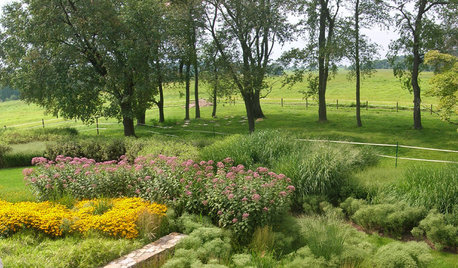
GARDENING GUIDESHow to Stop Worrying and Start Loving Clay Soil
Clay has many more benefits than you might imagine
Full Story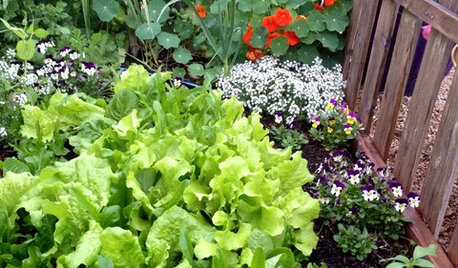
GARDENING GUIDESThe Poop Scoop: Enrich Your Soil With Good Old Manure
Get over the ick factor already — this natural super-ingredient for soil has so many benefits, you'll wonder why you ever went chemical
Full Story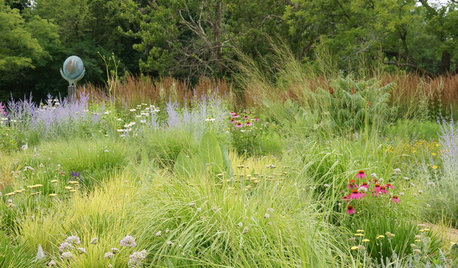
GARDENING GUIDESGet the Dirt on Your Garden’s Soil
Understand how your soil supports your plants so you can ensure your garden’s success
Full Story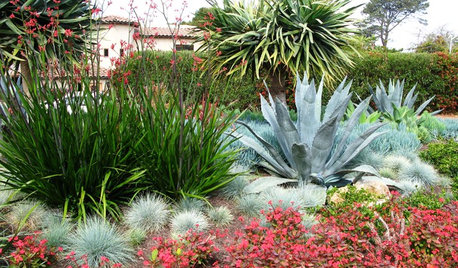
GARDENING GUIDESGardening Solutions for Dry, Sandy Soils
Has your desert or beachy site withered your gardening creativity? Try these ideas for a beautiful, easy-care landscape
Full Story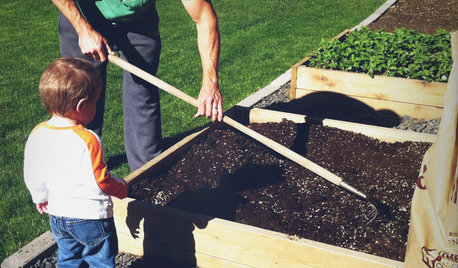
GARDENING AND LANDSCAPINGBuild a Raised Bed to Elevate Your Garden
A bounty of homegrown vegetables is easier than you think with a DIY raised garden bed to house just the right mix of soils
Full Story



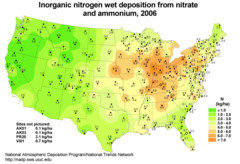

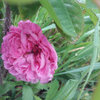
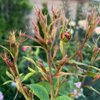


catspa_NoCA_Z9_Sunset14